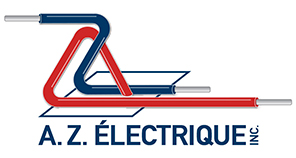5 things to know about recessed lighting
No matter how well designed your home, poor lighting can easily kill the mood. Recessed lights are an excellent option that, when used strategically, can effectively fix them, but they can turn your ceiling into Swiss cheese and cover your neighborhood with a dull light.
The goal of recessed pot lighting is to add not only visibility but also interest and ambiance to the environment. To do this, it is essential to superimpose your lighting: Combine recessed lighting with other types of lighting (such as decorative pendants, table lamps, sconces or candles) so that the pieces are well balanced and inviting. This is true for modern spaces, where recessed lighting is most often used, and for more traditional spaces, such as old townhouses, where well-placed recessed lights can work wonders.
Wash your Wall, not the floor, with light.
Recessed lighting is available in many configurations. When light bounces off a vertical surface in a room, it creates a great sense of illumination: you notice the wall rather than the fixture.
Spotlight your art and objects
Instead of covering a space with a light grid, introduce one or two spotlights to direct the eye. Unlike wall washing, spotlights, with their narrower beams, draw your gaze to a specific space in a room. For example, the use of spotlights in a bathroom over a porcelain sink and a bathtub shine the lights.
Choose the right style of trim
We all know that beauty is in the details. Recessed lighting comes with a wide variety of trim options and openings, and by choosing the right ones, the more discreet chandeliers can be more thoughtful and refined. The high-end fixtures have metallic finishes that look fantastic on wooden ceilings. For minimal applications, you can install flush-mounted appliances that are plastered into the ceiling to look seamless: all you’ll see is an origami cut-out in your ceiling plan.
Test the color of the bulb and aim for a warm glow
All bulbs are not equal. I prefer the warm glow of incandescent and halogen lighting. There are now a lot of great flush-mounted LED manufacturers, but it is still very important to test the color quality of the LEDs before committing. For residential applications, I recommend using the hottest LED available (usually +/- 2700k). This becomes very close to the quality of the halogen lighting, even if it is not quite the same thing. Be warned that some of the more affordable LED lighting options have very little consistency in color quality, and you can actually see different shades of light from one light to another.
Use dimmers throughout the house
If you do not take any other advice on this, you should install a safe dimmer (almost) all appliances in your home. Being able to adjust the intensity of lights (especially overhead) according to the mood you want to set is paramount. This is not only useful for your entertainment areas. I recommend using dimmers for all your bathroom fixtures (think about relaxing in the tub), under cabinet lighting, and even in your walk-in closets. An additional benefit of using dimmers is that when you vary a 10% bulb, you extend the life of the bulb. Note: LEDs typically require special low voltage electronic dimmers (ELVs) rather than typical low magnetic voltages. Check to see what type of transformer is inside your built-in appliance before choosing for dimmer control.
If you plan to install recessed lighting, contact us! We are always here to help you if you have questions.
If you found this article interesting, do not forget to share it with your friends.

